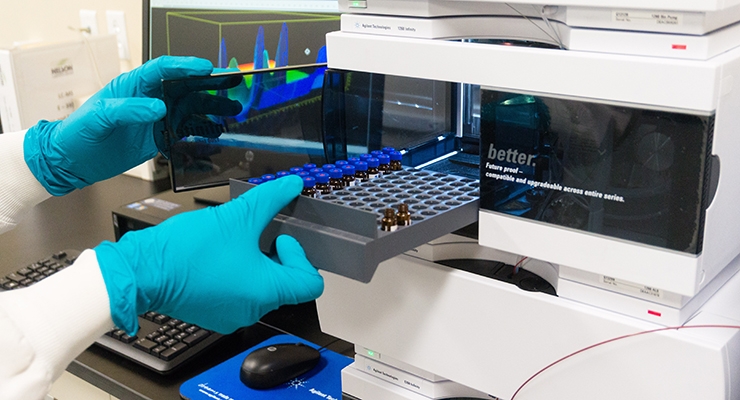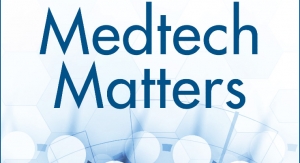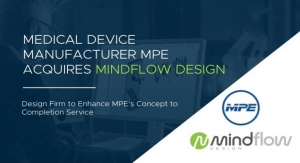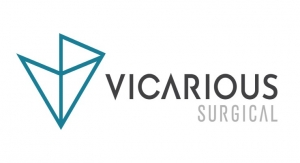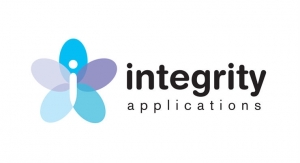Michael Barbella, Managing Editor03.10.16
Ever heard of the “Hello Kitty” protocol?
If not, don’t panic (at least not yet). It’s a new, relatively obscure testing process used by a small team of surgeons, hackers, and hardware boffins to assess a 3D-printed stethoscope head born from the 2012 Israeli invasion of Gaza. The project’s founder, emergency room physician Tarek Loubani, claims the device has better sound quality than the industry-leading Littmann Cardiology 3, deemed the “stethoscope of choice” among medical students and professionals.
Loubani established the Glia project out of sheer desperation, motivated by the lack of life-saving medical equipment in war-torn Gaza. Conditions were so dire that Loubani and his colleagues were forced to monitor victims’ heartbeats with their ears placed on the wounded’s chests—a situation he called “a tragedy, a travesty, and unacceptable.”
Using 10,000 euros of his own money, Loubani funded the stethoscope head’s engineering costs. He and his team tested the device in a process the group dubbed “Hello Kitty,” given the prevalence (and use) of cat-branded balloons in Gaza at the time. The team tested the stethoscope by pressing it against a balloon filled with water and measuring the amount of sound transmitted at each frequency. Audio-frequency response curve test results showed the device provides equivalent and better sound quality than the Littmann Cardiology 3, which features dual-lumen tubing and a tunable diaphragm to better capture low- or high-frequency sounds.
Loubani claims the stethoscope can be sterilized and include metal parts if necessary. It costs about $5 to produce (including the 30-cent head), making it a more economical choice for the developing world compared with the $200 Littmann device from 3M.
The Glia stethoscope’s design plans and printing/assembly instructions are available online (at Github.com/GliaX) for anyone to use. Loubani modeled his open source project after the free software movement; he hopes to eventually replace expensive proprietary devices with more affordable versions.
Loubani’s vision for cheaper, more readily accessible medical products extends well beyond the realm of 3D-printed stethoscopes. The Glia team also is developing an ear inspection device, a gauze-weaving loom, an electrocardiogram and a pulse oximeter, according to the website.
“The technology in the Pulse Ox is trivially simple for anybody with a high school-level knowledge of electronics: print, screen, etch, solder, test. I learned to assemble a pulse oximeter in an afternoon, and I could teach you to do the same even if you’ve never soldered before,” Loubani told Wired last summer. “The main challenge to all of these are making devices that work, and providing scientifically proven ways to test and validate the devices.”
Indeed, testing and validating the devices could prove difficult as the U.S. Food and Drug Administration (FDA) struggles to understand additive manufacturing technology. Although it has cleared a handful of 3D- printed medical devices in recent years—mostly on an emergency basis—the agency is still agonizing over a regulatory pathway for these products as well as sound safety/efficacy standards and testing protocols.
Regulating additive manufacturing won’t be easy, though. For starters, the technology has different technical considerations than standard manufacturing—allowing, for example, the “recycling” of manufacturing substrate from one build to the next. While products made with recycled substrate have proven superior to those created by traditional methods, the FDA nevertheless has reservations about potential material contamination, diminishing performance of recycled materials over time, and additional complexities with material traceability.
Testing standards could be particularly thorny, considering the technology is ideal for device customization. Industry experts predict that 3D-printed devices may need additional or different types of testing than their traditional counterparts to ensure product safety. Such tests might be needed to assess the quality of a personalized build, intended purpose, material and interfacial properties, design, surface and internal properties, and bioactivity (for polymers, metals, and calcium-based raw materials).
New validation methods might be warranted for clinical trials as well. Despite the regulatory complexities associated with the technology, 3D-printed devices are finding their way to market (85 at last count), either through the 510(k) process or premarket approvals. While few—if any—of these products are now patient-specific, medtech pundits are confident that custom-built devices will be commercially available in the future.
Personalized medicine, however, opens a Pandora’s box of regulatory landmines for clinical trials. Perhaps the most difficult challenge in this regard is designing a trial for a patient-specific product. Some experts question whether such studies are even possible: “When the intended patient population is one, what does a clinical trial even look like?” asks Michael Drues, Ph.D., president of Vascular Sciences, a Grafton, Mass.-based education, training, and consulting company offering a broad range of services to medical device, pharmaceutical and biotechnology firms.
Benchmarks are another concern. Trial goals for one patient may not be realistic for another. Also, different validation methods may be necessary based on the individualized device design as well as respective patient anatomies.
“For 3D printed devices, the industry is going to have to be flexible and creative. In some cases these are patient-specific, with a batch size of one, and in most other cases they are still in small quantities so the definition of ‘batch’ is a fluid concept,” noted Martell Winters, B.S., R.M. (NRCM), senior scientist at Nelson Laboratories Inc., a Salt Lake City, Utah-based provider of full, life cycle microbiology testing services for the medical device, pharmaceutical, tissue, and natural products industries.
“This is going to force the sterilization industry to think somewhat differently when performing a sterilization process qualification for these products. In some cases there might need to be a greater emphasis on process validation than on product testing,” he continued. “Of course, some amount of product testing must be performed, but concepts such as family grouping, batch testing and process simulations can come into play in a way that is different than traditional approaches. It is not likely that entirely new validation approaches will have to be created, but it will be important to use the same principles in slightly different ways for these products.”
A similar strategy might be feasible for devices employing nanotechnology. Like 3D printing, nanotechnology manipulates the rules of conventional wisdom, convoluting the traditional regulatory pathway. One of the more interesting wrinkles involves the categorization of nanodrugs and nanodevices. Both work in ways so different from other products that FDA officials perceivably could have trouble deciphering between the two and, therefore, deciding on an appropriate approval pathway.
Size changes within the nanoscale range and the potential for unpredictability could add complexity to the FDA review process, too. Consider, for instance, the use of nanoparticles in polymers for biocidal purposes. These materials are difficult to analyze because they typically contain very low levels of nanoparticles. A large sample size can be used to assure a certain concentration of particles per unit volume is present—a concentration demonstrated to have the required biocide activity level. But testing experts claim it is difficult to verify a uniform distribution of the particles, as opposed to an “on average” proper amount present.
Adding to this already complex maze of testing hurdles is the integration of electronics and mobile technology in medical products. These innovations are spawning more stringent testing practices and prompting device makers to incorporate mhealth-centric validations like WiFi certification and radio frequency environmental assays into their existing regulatory protocols.
“FCC regulations and HIPAA rules now apply to many [medical] devices. The FCC [Federal Communications Commission] recently set aside a specific spectrum for Medical Body Area Networks (MBAN),” explained Jim McGovern, validation manager at DDL, a provider of package, product, and materials testing for the medical device industry. The company operates facilities in Eden Prairie, Minn., and Fountain Valley, Calif. “MBAN devices will have to be licensed by the FCC and approved by the FDA. Also, there is a greater focus on usability and safety rather than just functionality. Functional testing now includes WiFi and cloud data storage aspects not considered a decade ago.”
Robin Rodgers and ISO 80369
It was an honest mistake—a simple mixup, really, at the most basic level.
It was the summer of 2006, and Robin Rodgers was spending the final weeks of her pregnancy in a Kansas hospital bed. Wracked by almost non-stop bouts of nausea and vomiting, the 24-year-old was steadily losing weight in her last trimester.
Rodgers’ doctors hospitalized her and ordered that she be fed through a tube until she gave birth.
On July 18, a nurse walked into Rodgers’ room to connect her feeding tube. But rather than snake the tube through Rodgers’ nose and into her stomach, the nurse that day coupled the liquid food bag to a tube entering a vein. The New York Times likened the error to “pouring concrete down a drain.”
Rodgers and her unborn daughter died hours apart.
Nearly a decade has passed since Rodgers’ tragic death and misconnected medical tubing is still quite prevalent within U.S. hospitals. But international regulators have taken steps to remedy the problem with the development of ISO 80369 series of small-bore connector standards, devised to “make it difficult, if not impossible, for unrelated delivery systems to be (physically) connected,” according to the Global Enteral Device Supplier Association.
The guidelines govern the redesign of connectors smaller than 8.5 mm in diameter, and apply to tubing connecting both liquids and gases. Eventually they will dictate connector size and shape for breathing systems and driving gases, enteral, limb cuff inflation, neuraxial and intravascular-hypodermic applications.
The new rules describe testing methods (Annex B, ISO 80369-1) to show that two connectors intended for different applications cannot be joined together. To comply with this requirement, some companies like DDL have purchased an axial/torsion (biaxial) test system that can perform the necessary assembly procedure.
“Medical connectors (ISO 594 and 80369) have been a very big focus [among customers], especially with the pending publication and implementation of ISO 80369,” noted Levi Loesch, product and materials engineer at DDL. “People are trying to anticipate the changes now and work them into their designs and DV (design verification) testing plans.”
The International Organization for Standardization’s 80369 series (1 through 20) contains all of the general test methods required by the various application standards. The processes are based on those contained in ISO 594, but modified to reduce test subjectivity (the Ease of Assembly assay was removed, for example) and to allow for variable testing, which can reduce the required number of samples in order to achieve the same confidence intervals as an attribute test.
Proposed designs are validated through hands-on usability testing to confirm that they meet their intended purpose of preventing the connection of a medical device from one delivery system to that of another system. Analysis of design drawings and physical force-fit testing are used to verify that connectors fit securely and non-compatible systems are physically prevented from coupling.
“Presently, luer fittings are used for many clinical applications from vascular access to urinary drainage. In recent history, there have been events with tragic outcomes due to misconnection of incorrect therapy lines (most notably a patient death resulting from an enteral feeding line mistakenly being connected to an vascular access patient connection). Due to the potential hazards associated with the use of these conventional luer connectors alone, there is a strong push in the industry to segregate unique connectors for various media. These new connectors are now a reality and ISO has reacted accordingly. Most older ISO specifications are typically based upon testing on a sampling basis versus 100 percent of all production,” said David Kralovetz, medical business development manager at Harrison, Ohio-based Cincinnati Test Systems, a designer and manufacturer of standard and custom leak test systems.
“For example, the method that ISO specified for air testing luer connectors (ISO 594) involved observance of bubbles over 15 seconds utilizing a partially liquid-filled syringe, indicating air leakage. By contrast, the new ISO 80369 specification for testing of non-luer small bore connectors allows air pressure and vacuum decay testing of these components using standardized leak testing instruments, a new trend for ISO which we have seen only in recent years. By permitting the use of CTS standard instruments using pressure and vacuum decay technology allows not only non-subjective limits, it also allows the user to obtain a qualified result versus a simple, attributed to ‘leaking or non-leaking’ result.”
Reprocessed device testing is undergoing an update as well. The FDA released new guidance last March recommending that medical device manufacturers more thoroughly test and label new products to clearly indicate appropriate reprocessing procedures.
The guidance was triggered by the outbreak of carbapenem-resistant enterobacteriaceae among patients undergoing endoscopic procedures at a southern California hospital. The bacteria has been linked to two deaths.
FDA’s guidance, “Reprocessing Medical Devices in Health Care Settings: Validation Methods and Labeling,” outlines the criteria that reprocessing instructions should meet to maintain safety standards. It also details proper testing types and protocols, recommending that manufacturers use at least two quantitative assays “capable of directly measuring clinically meaningful levels of clinically relevant soil.” In addition, the products should be tested both dirty and clean to ensure the absence of all contaminants.
* * *
The Internet of Things has been both a boon and a curse to the medtech industry. While it has led to some truly incredible science-fiction-like breakthroughs (the bionic eye, healing foam, 3D-printed skin, and color X-rays, among others), the concept potentially could rewrite the rules of medical device testing. Technological advancements and new materials are forcing testing firms to adjust their product validation methods. “The services and tests haven’t changed much, but the devices are getting smaller, requiring a little creativity in developing methods and setups that still characterize the device and not the test apparatus,” noted Dawn Lissy, president and founder of Empirical Tech, a family of companies offering a full range of consulting, testing, manufacturing and validation services. “We have been adjusting testing methods to address characterizing device coatings (titanium on PEEK, for example), and devices that are changing to other materials, specifically those that utilize the additive manufacturing processes.”
New technologies like 3D printing not only will require new validation methods, but perhaps a new way of thinking, too. As DDL’s McGovern observed: “The increased complexity and broader diversity of medical devices is making testing more difficult. There are new materials, smaller parts and more electronics in the newest devices. These changes require the expansion of existing test methods and the development of new ones.”
If not, don’t panic (at least not yet). It’s a new, relatively obscure testing process used by a small team of surgeons, hackers, and hardware boffins to assess a 3D-printed stethoscope head born from the 2012 Israeli invasion of Gaza. The project’s founder, emergency room physician Tarek Loubani, claims the device has better sound quality than the industry-leading Littmann Cardiology 3, deemed the “stethoscope of choice” among medical students and professionals.
Loubani established the Glia project out of sheer desperation, motivated by the lack of life-saving medical equipment in war-torn Gaza. Conditions were so dire that Loubani and his colleagues were forced to monitor victims’ heartbeats with their ears placed on the wounded’s chests—a situation he called “a tragedy, a travesty, and unacceptable.”
Using 10,000 euros of his own money, Loubani funded the stethoscope head’s engineering costs. He and his team tested the device in a process the group dubbed “Hello Kitty,” given the prevalence (and use) of cat-branded balloons in Gaza at the time. The team tested the stethoscope by pressing it against a balloon filled with water and measuring the amount of sound transmitted at each frequency. Audio-frequency response curve test results showed the device provides equivalent and better sound quality than the Littmann Cardiology 3, which features dual-lumen tubing and a tunable diaphragm to better capture low- or high-frequency sounds.
Loubani claims the stethoscope can be sterilized and include metal parts if necessary. It costs about $5 to produce (including the 30-cent head), making it a more economical choice for the developing world compared with the $200 Littmann device from 3M.
The Glia stethoscope’s design plans and printing/assembly instructions are available online (at Github.com/GliaX) for anyone to use. Loubani modeled his open source project after the free software movement; he hopes to eventually replace expensive proprietary devices with more affordable versions.
Loubani’s vision for cheaper, more readily accessible medical products extends well beyond the realm of 3D-printed stethoscopes. The Glia team also is developing an ear inspection device, a gauze-weaving loom, an electrocardiogram and a pulse oximeter, according to the website.
“The technology in the Pulse Ox is trivially simple for anybody with a high school-level knowledge of electronics: print, screen, etch, solder, test. I learned to assemble a pulse oximeter in an afternoon, and I could teach you to do the same even if you’ve never soldered before,” Loubani told Wired last summer. “The main challenge to all of these are making devices that work, and providing scientifically proven ways to test and validate the devices.”
Indeed, testing and validating the devices could prove difficult as the U.S. Food and Drug Administration (FDA) struggles to understand additive manufacturing technology. Although it has cleared a handful of 3D- printed medical devices in recent years—mostly on an emergency basis—the agency is still agonizing over a regulatory pathway for these products as well as sound safety/efficacy standards and testing protocols.
Regulating additive manufacturing won’t be easy, though. For starters, the technology has different technical considerations than standard manufacturing—allowing, for example, the “recycling” of manufacturing substrate from one build to the next. While products made with recycled substrate have proven superior to those created by traditional methods, the FDA nevertheless has reservations about potential material contamination, diminishing performance of recycled materials over time, and additional complexities with material traceability.
Testing standards could be particularly thorny, considering the technology is ideal for device customization. Industry experts predict that 3D-printed devices may need additional or different types of testing than their traditional counterparts to ensure product safety. Such tests might be needed to assess the quality of a personalized build, intended purpose, material and interfacial properties, design, surface and internal properties, and bioactivity (for polymers, metals, and calcium-based raw materials).
New validation methods might be warranted for clinical trials as well. Despite the regulatory complexities associated with the technology, 3D-printed devices are finding their way to market (85 at last count), either through the 510(k) process or premarket approvals. While few—if any—of these products are now patient-specific, medtech pundits are confident that custom-built devices will be commercially available in the future.
Personalized medicine, however, opens a Pandora’s box of regulatory landmines for clinical trials. Perhaps the most difficult challenge in this regard is designing a trial for a patient-specific product. Some experts question whether such studies are even possible: “When the intended patient population is one, what does a clinical trial even look like?” asks Michael Drues, Ph.D., president of Vascular Sciences, a Grafton, Mass.-based education, training, and consulting company offering a broad range of services to medical device, pharmaceutical and biotechnology firms.
Benchmarks are another concern. Trial goals for one patient may not be realistic for another. Also, different validation methods may be necessary based on the individualized device design as well as respective patient anatomies.
“For 3D printed devices, the industry is going to have to be flexible and creative. In some cases these are patient-specific, with a batch size of one, and in most other cases they are still in small quantities so the definition of ‘batch’ is a fluid concept,” noted Martell Winters, B.S., R.M. (NRCM), senior scientist at Nelson Laboratories Inc., a Salt Lake City, Utah-based provider of full, life cycle microbiology testing services for the medical device, pharmaceutical, tissue, and natural products industries.
“This is going to force the sterilization industry to think somewhat differently when performing a sterilization process qualification for these products. In some cases there might need to be a greater emphasis on process validation than on product testing,” he continued. “Of course, some amount of product testing must be performed, but concepts such as family grouping, batch testing and process simulations can come into play in a way that is different than traditional approaches. It is not likely that entirely new validation approaches will have to be created, but it will be important to use the same principles in slightly different ways for these products.”
A similar strategy might be feasible for devices employing nanotechnology. Like 3D printing, nanotechnology manipulates the rules of conventional wisdom, convoluting the traditional regulatory pathway. One of the more interesting wrinkles involves the categorization of nanodrugs and nanodevices. Both work in ways so different from other products that FDA officials perceivably could have trouble deciphering between the two and, therefore, deciding on an appropriate approval pathway.
Size changes within the nanoscale range and the potential for unpredictability could add complexity to the FDA review process, too. Consider, for instance, the use of nanoparticles in polymers for biocidal purposes. These materials are difficult to analyze because they typically contain very low levels of nanoparticles. A large sample size can be used to assure a certain concentration of particles per unit volume is present—a concentration demonstrated to have the required biocide activity level. But testing experts claim it is difficult to verify a uniform distribution of the particles, as opposed to an “on average” proper amount present.
Adding to this already complex maze of testing hurdles is the integration of electronics and mobile technology in medical products. These innovations are spawning more stringent testing practices and prompting device makers to incorporate mhealth-centric validations like WiFi certification and radio frequency environmental assays into their existing regulatory protocols.
“FCC regulations and HIPAA rules now apply to many [medical] devices. The FCC [Federal Communications Commission] recently set aside a specific spectrum for Medical Body Area Networks (MBAN),” explained Jim McGovern, validation manager at DDL, a provider of package, product, and materials testing for the medical device industry. The company operates facilities in Eden Prairie, Minn., and Fountain Valley, Calif. “MBAN devices will have to be licensed by the FCC and approved by the FDA. Also, there is a greater focus on usability and safety rather than just functionality. Functional testing now includes WiFi and cloud data storage aspects not considered a decade ago.”
Robin Rodgers and ISO 80369
It was an honest mistake—a simple mixup, really, at the most basic level.
It was the summer of 2006, and Robin Rodgers was spending the final weeks of her pregnancy in a Kansas hospital bed. Wracked by almost non-stop bouts of nausea and vomiting, the 24-year-old was steadily losing weight in her last trimester.
Rodgers’ doctors hospitalized her and ordered that she be fed through a tube until she gave birth.
On July 18, a nurse walked into Rodgers’ room to connect her feeding tube. But rather than snake the tube through Rodgers’ nose and into her stomach, the nurse that day coupled the liquid food bag to a tube entering a vein. The New York Times likened the error to “pouring concrete down a drain.”
Rodgers and her unborn daughter died hours apart.
Nearly a decade has passed since Rodgers’ tragic death and misconnected medical tubing is still quite prevalent within U.S. hospitals. But international regulators have taken steps to remedy the problem with the development of ISO 80369 series of small-bore connector standards, devised to “make it difficult, if not impossible, for unrelated delivery systems to be (physically) connected,” according to the Global Enteral Device Supplier Association.
The guidelines govern the redesign of connectors smaller than 8.5 mm in diameter, and apply to tubing connecting both liquids and gases. Eventually they will dictate connector size and shape for breathing systems and driving gases, enteral, limb cuff inflation, neuraxial and intravascular-hypodermic applications.
The new rules describe testing methods (Annex B, ISO 80369-1) to show that two connectors intended for different applications cannot be joined together. To comply with this requirement, some companies like DDL have purchased an axial/torsion (biaxial) test system that can perform the necessary assembly procedure.
“Medical connectors (ISO 594 and 80369) have been a very big focus [among customers], especially with the pending publication and implementation of ISO 80369,” noted Levi Loesch, product and materials engineer at DDL. “People are trying to anticipate the changes now and work them into their designs and DV (design verification) testing plans.”
The International Organization for Standardization’s 80369 series (1 through 20) contains all of the general test methods required by the various application standards. The processes are based on those contained in ISO 594, but modified to reduce test subjectivity (the Ease of Assembly assay was removed, for example) and to allow for variable testing, which can reduce the required number of samples in order to achieve the same confidence intervals as an attribute test.
Proposed designs are validated through hands-on usability testing to confirm that they meet their intended purpose of preventing the connection of a medical device from one delivery system to that of another system. Analysis of design drawings and physical force-fit testing are used to verify that connectors fit securely and non-compatible systems are physically prevented from coupling.
“Presently, luer fittings are used for many clinical applications from vascular access to urinary drainage. In recent history, there have been events with tragic outcomes due to misconnection of incorrect therapy lines (most notably a patient death resulting from an enteral feeding line mistakenly being connected to an vascular access patient connection). Due to the potential hazards associated with the use of these conventional luer connectors alone, there is a strong push in the industry to segregate unique connectors for various media. These new connectors are now a reality and ISO has reacted accordingly. Most older ISO specifications are typically based upon testing on a sampling basis versus 100 percent of all production,” said David Kralovetz, medical business development manager at Harrison, Ohio-based Cincinnati Test Systems, a designer and manufacturer of standard and custom leak test systems.
“For example, the method that ISO specified for air testing luer connectors (ISO 594) involved observance of bubbles over 15 seconds utilizing a partially liquid-filled syringe, indicating air leakage. By contrast, the new ISO 80369 specification for testing of non-luer small bore connectors allows air pressure and vacuum decay testing of these components using standardized leak testing instruments, a new trend for ISO which we have seen only in recent years. By permitting the use of CTS standard instruments using pressure and vacuum decay technology allows not only non-subjective limits, it also allows the user to obtain a qualified result versus a simple, attributed to ‘leaking or non-leaking’ result.”
Reprocessed device testing is undergoing an update as well. The FDA released new guidance last March recommending that medical device manufacturers more thoroughly test and label new products to clearly indicate appropriate reprocessing procedures.
The guidance was triggered by the outbreak of carbapenem-resistant enterobacteriaceae among patients undergoing endoscopic procedures at a southern California hospital. The bacteria has been linked to two deaths.
FDA’s guidance, “Reprocessing Medical Devices in Health Care Settings: Validation Methods and Labeling,” outlines the criteria that reprocessing instructions should meet to maintain safety standards. It also details proper testing types and protocols, recommending that manufacturers use at least two quantitative assays “capable of directly measuring clinically meaningful levels of clinically relevant soil.” In addition, the products should be tested both dirty and clean to ensure the absence of all contaminants.
* * *
The Internet of Things has been both a boon and a curse to the medtech industry. While it has led to some truly incredible science-fiction-like breakthroughs (the bionic eye, healing foam, 3D-printed skin, and color X-rays, among others), the concept potentially could rewrite the rules of medical device testing. Technological advancements and new materials are forcing testing firms to adjust their product validation methods. “The services and tests haven’t changed much, but the devices are getting smaller, requiring a little creativity in developing methods and setups that still characterize the device and not the test apparatus,” noted Dawn Lissy, president and founder of Empirical Tech, a family of companies offering a full range of consulting, testing, manufacturing and validation services. “We have been adjusting testing methods to address characterizing device coatings (titanium on PEEK, for example), and devices that are changing to other materials, specifically those that utilize the additive manufacturing processes.”
New technologies like 3D printing not only will require new validation methods, but perhaps a new way of thinking, too. As DDL’s McGovern observed: “The increased complexity and broader diversity of medical devices is making testing more difficult. There are new materials, smaller parts and more electronics in the newest devices. These changes require the expansion of existing test methods and the development of new ones.”
|
The memory is still fresh in James D. Rancourt’s mind. The year was 1989, and Rancourt was working hard to establish both himself and his startup firm, Polymer Solutions Inc., in the materials testing market. By chance (or perhaps some self-induced luck), he found his foothold in a roundabout way, serving as an expert witness for a manufacturer accused of producing defective walk-in coolers and freezers. Armed with an extensive knowledge of analytical chemistry and materials testing, Rancourt traced the defect to the appliances’ adhesive systems, which caused the aluminum skin panels to debond from the thermal insulation materials, resulting in equipment failures. Rancourt’s benchside exploits might have ended with that first case had he not recognized a golden opportunity to integrate his passion for analytical chemistry and creative problem-solving into a viable business strategy. Since his courtroom debut 27 years ago, the Polymer Solutions founder/CEO has served as an expert witness in more than 100 cases (domestic and international), and has created a fully-loaded testing laboratory that provides litigation support in patent infringement, trade secret theft, personal injury/death, product liability, and manufacturing defect disputes. While Christiansburg, Va.-based Polymer Solutions provides a myriad of testing services to clients in various industries—including medical—none are perhaps as intricate and consensus-driven as those conducted for litigation support. Some of the tests, industry experts claim, are similar to those administered for medical device approval, but others are custom-built to specifically investigate a failure. “Tests performed for litigation support are often performed to answer specific questions related to a failure and to determine the cause of failure,” explained Rancourt, who holds a Ph.D. in polymer chemistry. “Some of the selected tests may be the same as those required for medical device approval. Other unique tests may also be performed specifically in response to the investigation of a failure. For example, part of the failure analysis may require that exposure to certain environments be ruled in or ruled out. The analysis of a medical device that is a part of a litigated matter is also a very unique sample. In the case of a failure, there may be pieces that need to be put back together, there may be pieces that are missing, and it may not be possible to put the pieces back together without further altering critical features and attributes of the sample.” One of the major differences between litigation support tests and medical device approval analyses is the protocol used in both processes. When preparing a case for trial, the various experts involved in the proceedings can review and potentially make modifications to a proposed testing protocol; consequently, that testing process undergoes a series of changes and is implemented only after each expert is satisfied with the specific analyses that will be performed. Medical device approval testing is not subject to such open-ended evolution. In addition, litigation support tests for product disputes typically are conducted in an independent laboratory, regardless of a manufacturer’s ability to perform the analyses. The logic behind this unwritten rule is simple: Results must be viewed as unbiased and therefore obtained by a third party. Case in point: Pittsburgh, Pa.-based materials characterization laboratory RJ Lee Group Inc. helped resolve a tiff between a medical device implant manufacturer and its supplier, even though both parties were fully capable of testing the faulty product. The manufacturer blamed a supplied component for the device’s increased failure rate after implantation, but the supplier insisted it followed product specifications. The supplier contracted RJ Lee Group to characterize the physical, chemical, and microstructural properties of the component, both as it was supplied to the manufacturer and after a surface coating application. RJ Lee Group experts evaluated failed components extracted from patients, and examined the products using optical microscopy, scanning electron microscopy, and mechanical techniques. The laboratory also reviewed product specifications, inspection reports, and studies before ultimately absolving the supplier of any wrongdoing. Litigation support testing has grown in demand in recent years as companies like Medtronic plc and DePuy Synthes defend themselves against patent infringement and product liability accusations/lawsuits. Though many independent testing laboratories now offer the service, few have designated areas designed specifically for this purpose. Though such standard attributes as cleanliness, organization, lighting, temperature control, and chemical competence are essential to all laboratory testing areas, details like wide inspection tables, comfortable seating, and non-distracting photographic backgrounds are key hallmarks of any litigation support testing space. “There are some unique aspects to litigation support testing that require unique offerings as compared to a more standard lab testing,” Rancourt told Medical Product Outsourcing. “For all litigation support testing, inspection of the physical evidence by multiple experts is going to occur. Therefore, the laboratory space should have inspection tables that are wide enough to hold the evidence but not so wide that experts on opposite sides of the laboratory benches are not really able to see the physical evidence properly. Photography accompanies the inspection to provide documentation of all of the pieces and parts. The photographs are a very important part of the data sets for the samples, will likely be used in multiple experts reports, and may be used in court. As a result, the choice of lighting and the provision for clean non-distracting backgrounds is important to provide within the space. We understand the needs of these types of testing protocols and felt it was paramount we created a space that met each one of those needs. Our facility, for example, properly accommodated an inspection that included four independent experts, and the lawyers they represented, in a large litigated matter.” — M.B. |

